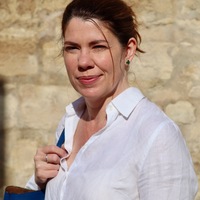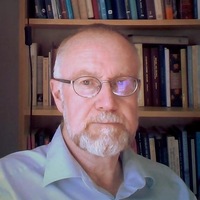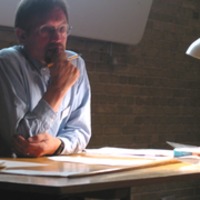Danielle Buschinger / Anne Ibos-Augé / Mathieu Olivier (Hg.): Magie, Féerie, Sorcellerie. Actes du Colloque international des 13, 14 et 15 Mars 2019 (Logis du Roy, Amiens). Amiens: "Centre d'Études Médiévales de Picardie". (= Médiévales 69), pp. 267–280., 2019
On August 28, 1540, Barbara Pachler, a farmer's wife and mother of six children, living in the se... more On August 28, 1540, Barbara Pachler, a farmer's wife and mother of six children, living in the secluded hamlet of Windlahn in the Sarntal valley north of Bozen, was burned as a "unholdin" (witch) "biß Zú Púlfer vnd Áschn" according to the court record. The judge and thirteen jurors had found Barbara guilty of lipcraft and magic. Barbara's "confession" is described in detail in the trial files and ranges from abrenuntiatio, pactum and homagium (denial of God and devil pact and homage) to milk theft, mouse magic, enchantment of cattle and people, weather magic, poison mixing and the passing on of magic. There is no lack of nocturnal flight of witches, dance, festival and sexual intercourse with the devil. The tortures that led to the death-worthy confession remain unmentioned. Barbara Pachler, the "Bachlerzottl", as the Sarntal "witch" was later called in legend and literature, has not yet been rehabilitated.











Uploads
Papers by Max Siller
Under what conditions did leaders of Germanic gentes become "heroes" of songs and epics of the German Middle Ages?
The "Memories" of Helene Kottanner, Elisabeth's chambermaid, Emperor Sigismund's heir, read like a medieval thriller. At the request of her mistress and accompanied by a Hungarian helper, Helene steals St. Stephen's crown from the multi-sealed cellar vault of Plintenburg Castle (Visegrád, north of Budapest) at risk of death. On the night when Helene brought the crown to Komárno, February 21, 1440, Elisabeth gave birth to a male heir there. He was baptized Ladislaus (Lászlo) and on Pentecost Sunday, May 15, 1440, was crowned King of Hungary in Stuhlweissenburg (Székesfehérvár). – What are the functions and motivations of Helene's "Memories"? Is it a petition, a propaganda pamphlet, an apology or is it a memoir?
In the history of the Crusades, poetry is not only an eloquent scientific testimony to the contemporary mentality, but also a powerful political tool. It is well known that Frederick II's crusade has a long history. From the very beginning it was commented on by German poets. In 1213, none other than Walther von der Vogelweide opposed the manner in which Pope Innocent III. tried to win subsidia for the crusade, the implementation of which was then postponed year after year. In 1227, however, Walther showed himself to be an ardent supporter of the "beloved journey across the sea". Among the crusaders of Frederick was the poet Freidank, a restless and incorruptible spirit who, in his epigrammatic and gnomish verses, represents opinions that reveal a completely independent point of view, also with regard to the Roman Curia and the banishment of the emperor. his "Akkon-poems" are among the most vivid testimonies to the crusade of Frederick II and show us realistic and surprising details of this undertaking. Neidhart is even more disappointed about the adventure outremer, who sums up his criticism of the crusade in memorable verses: "Nowhere does a man belong better than at home in his parish!".
Die Lösung dieses bisher unbekannten frühmittelalterlichen „Krimis“ mit einer Fülle von Überraschungen kann nur mithilfe interdisziplinärer mediävistischer Forschungen erfolgen: In Zusammenarbeit der Disziplinen römische Historiographie, Geschichte der Völkerwanderung, Archäologie, Kunstgeschichte, Sprachgeschichte, Runenkunde und altnordische Literaturgeschichte gelingt die Rekonstruktion einer phantastischen Liebesgeschichte aus Germanien um die Mitte des 4. Jahrhunderts.
Around 1240, Frederick II built Castel del Monte, "the most fascinating building of Frederick" (HOUBEN 2008) and "maybe the most famous castle in Italy" (RADER 2010), unique in its combination of fortification and sacred building elements, still full of unexplained symbolism and puzzles. Three architectural elements, keystones on the vault, hitherto interpreted as "philosopher", "faun" and "birds pecking at each other", reveal surprising aspects of meaning, when we include a Sangspruch by Reinmar of Zweter (c. 1235-36) related to the Emperor: they point to an almost mythical imperial omnipresence.
Mit Beiträgen von Tracy Adams, Klaus Amann, Miguel Ayerbe Linares, Alvise Andreose, Davide Bertagnolli, Jasmin El-Assil, Fulvio Ferrari, Winfried Frey, Michael Gebhardt, Nigel Harris, Manshu Ide, Hans Moser, Josef Nössing, Helmut Rizzolli, Max Siller, Ursula Stampfer, Armin Torggler, Andreas Vonach, Erdinç Yücel. Herausgegeben wird der Band von Elisabeth De Felip-Jaud und Max Siller.
Under what conditions did leaders of Germanic gentes become "heroes" of songs and epics of the German Middle Ages?
The "Memories" of Helene Kottanner, Elisabeth's chambermaid, Emperor Sigismund's heir, read like a medieval thriller. At the request of her mistress and accompanied by a Hungarian helper, Helene steals St. Stephen's crown from the multi-sealed cellar vault of Plintenburg Castle (Visegrád, north of Budapest) at risk of death. On the night when Helene brought the crown to Komárno, February 21, 1440, Elisabeth gave birth to a male heir there. He was baptized Ladislaus (Lászlo) and on Pentecost Sunday, May 15, 1440, was crowned King of Hungary in Stuhlweissenburg (Székesfehérvár). – What are the functions and motivations of Helene's "Memories"? Is it a petition, a propaganda pamphlet, an apology or is it a memoir?
In the history of the Crusades, poetry is not only an eloquent scientific testimony to the contemporary mentality, but also a powerful political tool. It is well known that Frederick II's crusade has a long history. From the very beginning it was commented on by German poets. In 1213, none other than Walther von der Vogelweide opposed the manner in which Pope Innocent III. tried to win subsidia for the crusade, the implementation of which was then postponed year after year. In 1227, however, Walther showed himself to be an ardent supporter of the "beloved journey across the sea". Among the crusaders of Frederick was the poet Freidank, a restless and incorruptible spirit who, in his epigrammatic and gnomish verses, represents opinions that reveal a completely independent point of view, also with regard to the Roman Curia and the banishment of the emperor. his "Akkon-poems" are among the most vivid testimonies to the crusade of Frederick II and show us realistic and surprising details of this undertaking. Neidhart is even more disappointed about the adventure outremer, who sums up his criticism of the crusade in memorable verses: "Nowhere does a man belong better than at home in his parish!".
Die Lösung dieses bisher unbekannten frühmittelalterlichen „Krimis“ mit einer Fülle von Überraschungen kann nur mithilfe interdisziplinärer mediävistischer Forschungen erfolgen: In Zusammenarbeit der Disziplinen römische Historiographie, Geschichte der Völkerwanderung, Archäologie, Kunstgeschichte, Sprachgeschichte, Runenkunde und altnordische Literaturgeschichte gelingt die Rekonstruktion einer phantastischen Liebesgeschichte aus Germanien um die Mitte des 4. Jahrhunderts.
Around 1240, Frederick II built Castel del Monte, "the most fascinating building of Frederick" (HOUBEN 2008) and "maybe the most famous castle in Italy" (RADER 2010), unique in its combination of fortification and sacred building elements, still full of unexplained symbolism and puzzles. Three architectural elements, keystones on the vault, hitherto interpreted as "philosopher", "faun" and "birds pecking at each other", reveal surprising aspects of meaning, when we include a Sangspruch by Reinmar of Zweter (c. 1235-36) related to the Emperor: they point to an almost mythical imperial omnipresence.
Mit Beiträgen von Tracy Adams, Klaus Amann, Miguel Ayerbe Linares, Alvise Andreose, Davide Bertagnolli, Jasmin El-Assil, Fulvio Ferrari, Winfried Frey, Michael Gebhardt, Nigel Harris, Manshu Ide, Hans Moser, Josef Nössing, Helmut Rizzolli, Max Siller, Ursula Stampfer, Armin Torggler, Andreas Vonach, Erdinç Yücel. Herausgegeben wird der Band von Elisabeth De Felip-Jaud und Max Siller.